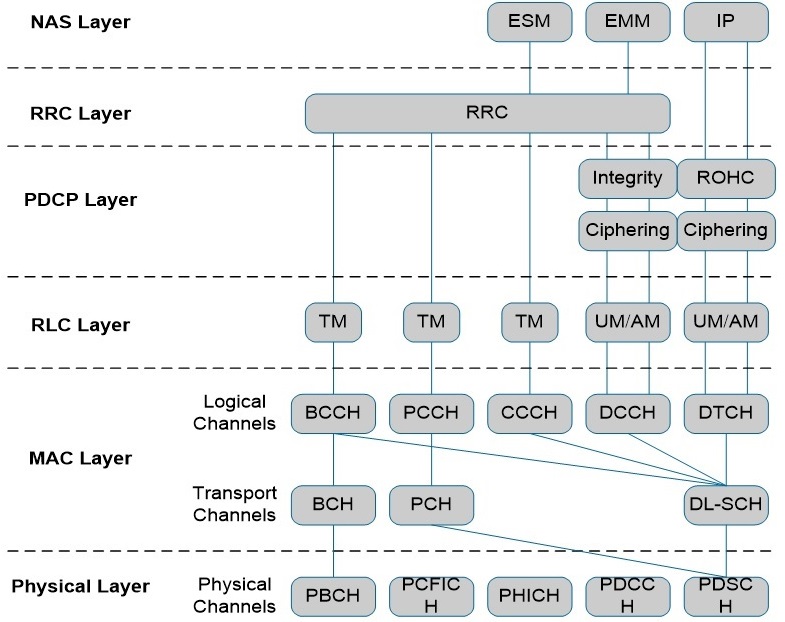

OFDM divides a given channel into many narrower subcarriers. It provides the essential spectral efficiency to achieve high data rates but also permits multiple users to share a common channel. LTE uses the popular orthogonal frequency division multiplex (OFDM) modulation scheme. Some bandwidths cannot be used in different bands. The 5- and 10-MHz widths are the most common. The carrier selects the bandwidth depending on spectrum holdings as well as the type of service to be offered. The standard is set up to permit bandwidths of 1.4, 3, 5, 10, 15, and 20 MHz. LTE is a broadband wireless technology that uses wide channels to achieve high data rates and accommodate lots of users. Bands 33 through 44 are used for time division duplexing (TDD), so the same frequencies are used for both uplink and downlink. The spacing between FDD channels in bands 1 through 28 varies considerably depending on carrier spectrum holdings. Most of the bands are set up for frequency division duplexing (FDD), which uses two separate bands for uplink and downlink. For instance, Verizon’s iPhone 5 uses different bands than AT&T’s iPhone 5. Most LTE phones use two of these bands, and they aren’t the same from carrier to carrier. Different carriers use different bands depending upon the country of operation and the nature of their spectrum holdings. Specific bands have been designated for LTE (see the table). LTE operates in some of the existing cellular bands as well as newer bands. While LTE-A is still being developed, some LTE-A service could begin late in 2013.
#Uplink and downlink in lte upgrade
1 Called LTE-Advanced (LTE-A), this significant upgrade to the LTE standard will provide more speed and greater reliability. In the meantime, the next phase of the LTE standards as put forth by the Third Generation Partnership Project (3GPP) is ready to be deployed. It will be years before this expansion is complete, and older radio technologies like GSM and CDMA will coexist with LTE for a while (see “The Evolution Of LTE,” ). Multiple 2G and 3G cellular radio methods are being phased out as carriers build their new LTE networks. The complexity is a function of the advanced wireless methods used as well as the many options and features that can be implemented.Long-Term Evolution (LTE) is being adopted around the world as the primary cell-phone communications service. Today, with large-scale ICs, LTE can be easily accommodated in basestations and battery-powered handsets alike. It incorporates features that could not have been economically implemented as recently as a decade ago. LTE is likely the most complex wireless system ever developed.


 0 kommentar(er)
0 kommentar(er)
